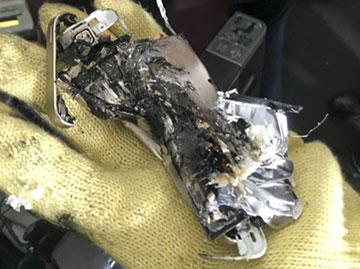An effective response to an emergency situation ensured the safe arrival of Qantas Airbus A380 flight QF7 from Sydney to Dallas, Texas, on 15 May this year.

About two hours prior to arrival at Dallas-Fort Worth, United States, a passenger alerted cabin crew to smoke in the cabin. Cabin crew initiated the basic fire drill procedure and the customer service manager (CSM) made an emergency call on the aircraft interphone to alert all crew to the presence of smoke.
Cabin crew located the source of the smoke and removed seat cushions and covers while the CSM turned off power to the centre column of the seats.
On further investigation, the crew found a crushed personal electronic device (PED) wedged tightly in the seat mechanism. The PED contained a lithium battery.
A rapid and coordinated response by the crew ensured the situation was effectively managed and the safe landing of the aircraft.
The incident highlights the hazards of transporting lithium-ion battery powered PEDs on aircraft. More than a billion lithium batteries are believed to be transported by air every year, with potentially hundreds carried on single sectors on large aircraft.
The ATSB has received 17 notifications of similar incidents of lithium battery thermal events in aircraft over the past six years.
Cabin crew and passenger education remains a key component to managing these events. The Civil Aviation Safety Authority web page Travelling safely with batteries and pamphlet Is your luggage safe? provides information on the safe carriage of lithium-ion batteries and lithium-ion powered devices aboard aircraft.
Read the report: Smoke event involving Airbus A380, VH-OQD, about 1,500 km west-south-west of Dallas-Fort Worth Airport, United States, on 16 May 2016


